Meet three of Rome's wildest women
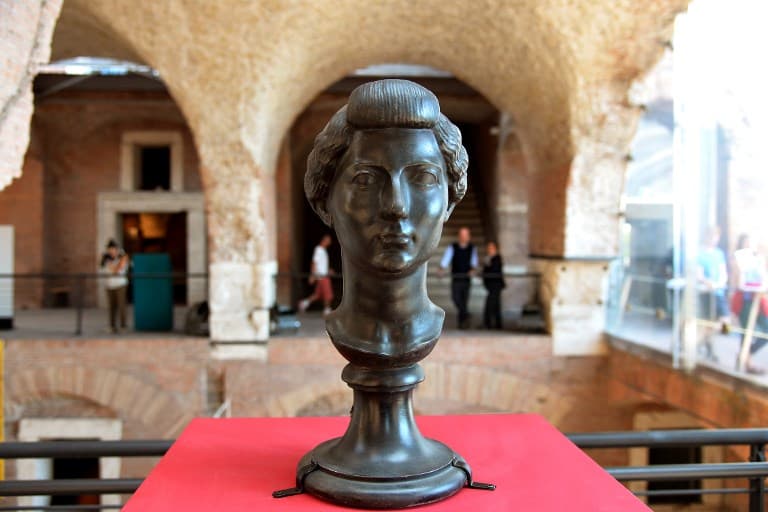
The stories of Rome's women are as fascinating as the city itself. Rachel Emerson of tour company The Rogue Historians introduces three of her favourite Roman women.
On March 8th, to celebrate International Women’s Day or “Festa della Donna”, the women of Rome will march through the city to highlight gender equality and women’s rights.
This rebellious spirit is nothing new. In 195 BC the women of Rome poured into the streets to have the Lex Oppia repealed. It was a law brought in during the Second Punic War that limited the “frivolous” spending of women, who were apparently bleeding their husbands’, and the city’s, coffers dry.
The women were successful; the law was scrapped, and a tradition of indomitable female spirit has endured ever since.
READ ALSO: Six inspiring Italian women who changed the world

'Untameable': at a march against violence against women in Rome, 2018. Photo: Tiziana Fabi/AFP
Italian society and legislation may not have promoted gender equality through the centuries, but that hasn’t stopped generations of Italian women rising above the parapet to leave a mark on history.
So to mark this International Women’s Day, here’s just a handful of exceptional women who have made Rome's history richer.
Livia Drusilla (58 BC-AD 29), the 'First Lady' of Rome
She may have lived nearly 2,000 years ago, but no list of Rome’s most famous women would be complete without a mention of Livia Drusilla, the wife of Rome’s first emperor, Augustus. Despite living at a time when women were governed by male guardians, Livia enjoyed an unprecedented position of prominence and power within Roman society.
Hailing from a prestigious, political aristocratic family, Livia herself was a shrewd and savvy operator who knew how to play Roman men at their own game. In public, Livia always played the role as the perfect model of female propriety; the perfectly modest, virtuous and loyal Roman wife, who even went so far as to spin and weave all of the imperial clothes from scratch.

Livia depicted as a goddess. Photo: Scailyna - CC BY-SA 4.0, Wikimedia
In private, however, Livia enjoyed the privileged status as counsellor to her husband. She advised him on a huge range of political matters, and maintained her own circle of clients and protégés, many of whom she helped to push into political positions.
Respectable Roman women were supposed to be quiet and basically anonymous, but Livia’s image spread throughout the empire, on coinage and in sculpture. We know of 88 sculptures of Livia – unheard of at a time when the only statues of women were goddesses.
Livia’s ambitions were fully realised when Augustus died and her son Tiberius succeeded him, cementing the dynasty of the first family of Rome. The writers of history were often unkind in their portrayal of her, casting her as treacherous, avaricious, power-hungry and even murdering. Romans gossiped that she poisoned her rivals and possibly even her own husband in order to secure her son’s position.
READ ALSO: The grim reality of the brothels of Pompeii
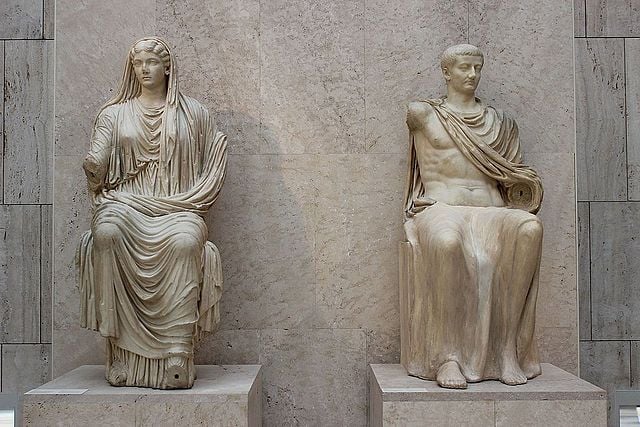 Livia and her son Tiberius, in statues taken from Paestum. Photo: Miguel Hermoso Cuesta - CC BY-SA 4.0, Wikimedia
Livia and her son Tiberius, in statues taken from Paestum. Photo: Miguel Hermoso Cuesta - CC BY-SA 4.0, Wikimedia
But through the line of her two sons, Tiberius and Drusus, she is literally the matriarch of the entire Julio-Claudian dynasty. She is a woman who, despite living at a time when women were severely restricted, saw a route to relative independence and power. As the “First Lady of Rome” she broke the glass ceiling of Roman society at the time, which is precisely why she made the writers of history so nervous.
Olimpia Maidalchini (1591-1657), the 'female pope'
The extraordinary life of Donna Olimpia Maidalchini is something of a rags-to-riches story. She was a woman who in the 17th century decided that she wasn’t going to accept the path that life had set out for her and rose from obscurity to become the closest advisor of the pope, earning herself infamy and the nicknames “La Papessa”, the female pope, and more derogatorily, “La Pimpaccia”, woman of sin.
Born to a modest family, Olimpia was destined for life in a convent, but this formidable young girl had other plans. Whilst undergoing instruction for taking holy orders, she accused the local priest of sexually harassing her.
The priest resigned in shame and young Olimpia, at the age of 16, found herself a suitable match for marriage: an elderly landowner, one of the wealthiest men in her hometown of Viterbo. Just three years later her first husband died, leaving her a free and wealthy widow.
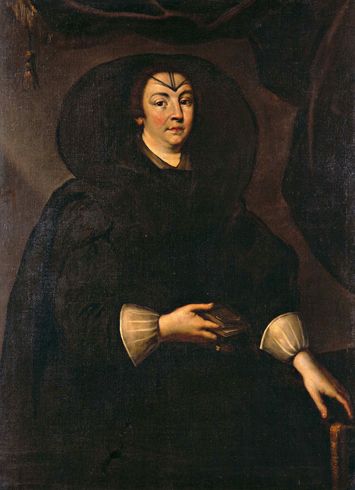
A portrait of the merry widow.
Her next husband was Pamphilio Pamphilj, a man from one of Rome’s most prominent families. Olimpia now had the aristocratic prestige to match her wealth. This marriage lasted considerably longer, and allowed Olimpia to embed herself in elite Roman society.
When her second husband died in 1639, she decided not to remarry – she was already 48 years old – but more importantly, her brother-in-law, Giambattista Pamphilj, was already a powerful cardinal, and on track to become even more.
READ ALSO: The Italian mathematician who helped pave the way for women in STEM
By 1644, her brother-in-law was elected to the papacy and became Pope Innocent X. The pair already had a long familial relationship and it seemed that Innocent X had come to rely on her for advice. So, shortly after his election, the pope bestowed Olimpia with certain honours, including being designated his heir in his will and named the “Princess of San Martino”, near her hometown.
According to accounts she convinced the pope that it was immoral for the Vatican to collect taxes from brothels, and instead, he sold her the right to collect the taxes. She even hung the Pamphilj family crest above the doors of her brothels so that local law enforcement would leave her establishments alone.
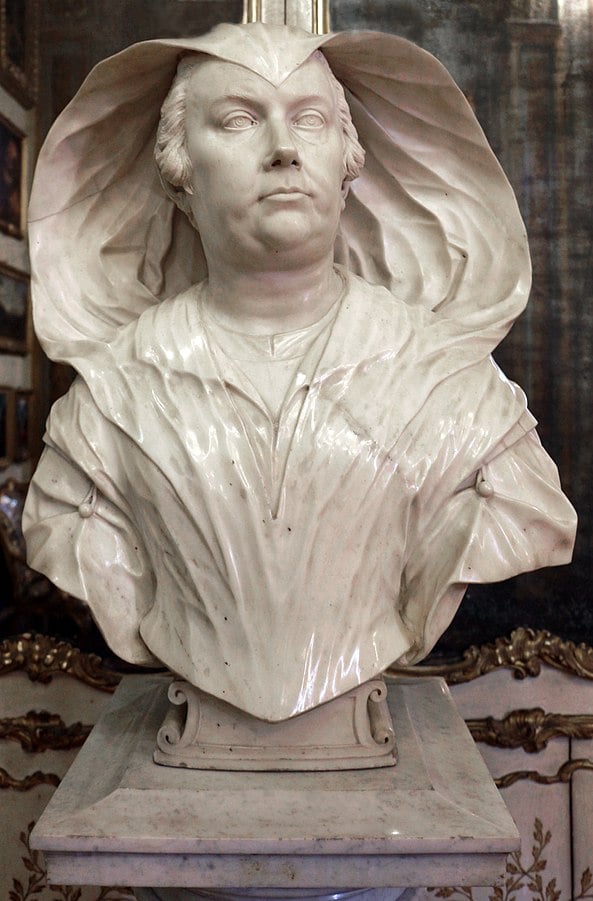
Olimpia Maidalchini's bust in the Galleria Doria Pamphilj in Rome. Photo: Sailko - CC BY 3.0, Wikimedia
Needless to say such a brazen display of power from a woman at this time was scandalous, and earned her the hatred of the Roman people. Olimpia was seen as the reins behind the papacy and many suggested that she was in fact the pope’s mistress.
When Innocent X died on January 7th 1655, Olimpia’s power in Rome evaporated and the city was no longer safe for her. Before she made her escape, it is said that she took two great chests full of silver and gold from under the pope’s bed and loaded them into her carriage. She then bid the city farewell. Olimpia fled to her estate at San Martino al Cimino, never to return to Rome again. She died two years later from the plague.
Olimpia was certainly a fierce, independent, and at times unlikable woman, but her legacy was to be enduring. One of Rome’s most famous ghost stories still tells the story of “la Pimpaccia”, the mistress of the Vatican.
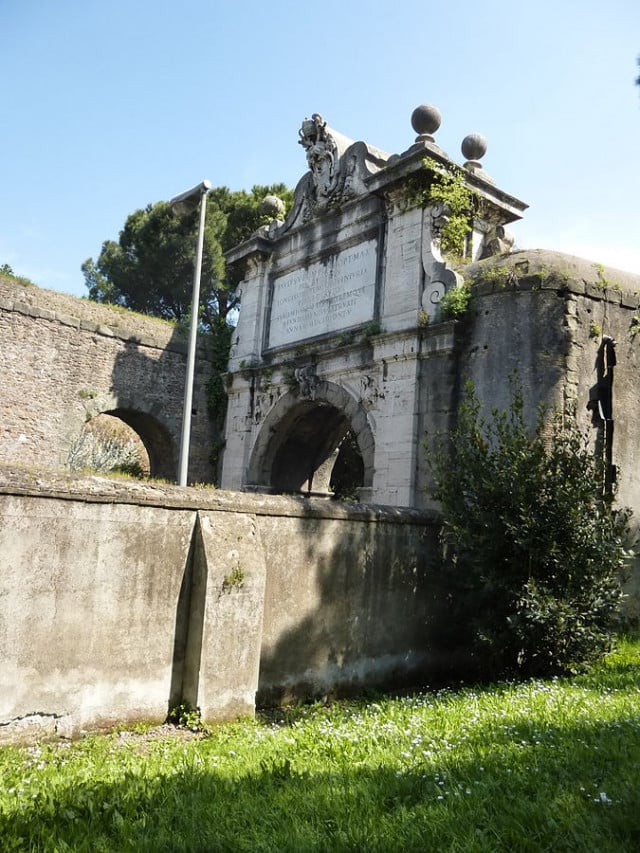
The arch through which Olimpia's ghostly carriage is said to disappear. Photo: By Lalupa - CC BY-SA 3.0, Wikimedia
They say that on January 7th each year, the night of the death of the pope, Olimpia can be seen loading the crates of gold into a black carriage at her palace on Piazza Navona. She climbs aboard and the chariot tears away, pulled by four black steeds. The carriage races through the streets of Rome, leaving a trail of fire in its wake, Olimpia’s shrill laugh ringing through the air. She makes her way towards Ponte Sisto and over the bridge towards the Gianicolo Hill, where the carriage is said to disappear through the gates of Hell.
There are few men who have stories like that told about them more than 350 years after their death.
Artemisia Gentileschi (1593-c.1656), painter of bold and defiant women
Artemisia Gentileschi was one of the great artists of the Baroque, more than capable of holding her own next to some of the more famous giants of the period. Her canvases were bold and dynamic, revealing her female protagonists as so much more than passive objects of the male gaze, and they were in high demand during her own lifetime.
Artemisia’s art is captivating in its own right, but for that art to be produced by a 17th-century woman whose life was marked by tragedy and violence makes her an even more intriguing character.
READ ALSO: An Italian Baroque heroine for the #MeToo era
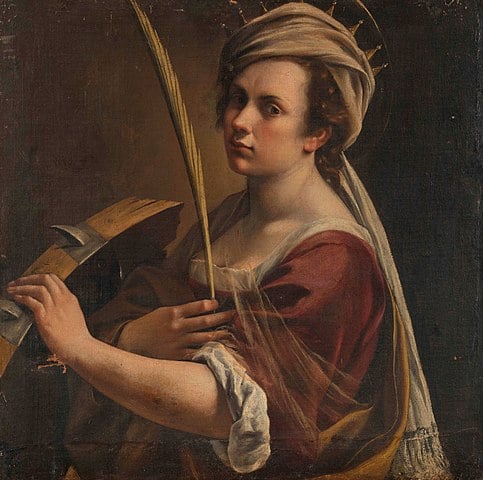
Artemisia Gentileschi, Self-Portrait as Saint Catherine of Alexandria, c. 1616.
Born in Rome in 1593, she was the daughter of painter Orazio Gentileschi. Her father was a talented artist and a contemporary and friend of Caravaggio. Artemisia showed promise from an early age, and despite her father’s initial reluctance to train his daughter, he eventually realised her potential and fostered her fast-developing skills.
Orazio decided to introduce Artemisia to one of his colleagues, Agostino Tassi, for further tuition (professional art academies were a male-only arena at the time). The decision was to prove a tragic one: Tassi brutally raped Artemisia. She was just 17 years old.
For women of the era rape brought great shame on the family and particularly the woman. As a result, women were often forced to marry their rapists (this custom of a "rehabilitating marriage" would continue in Italy until the mid-20th century, when Franca Viola pushed to have the law scrapped and her rapist fully prosecuted).
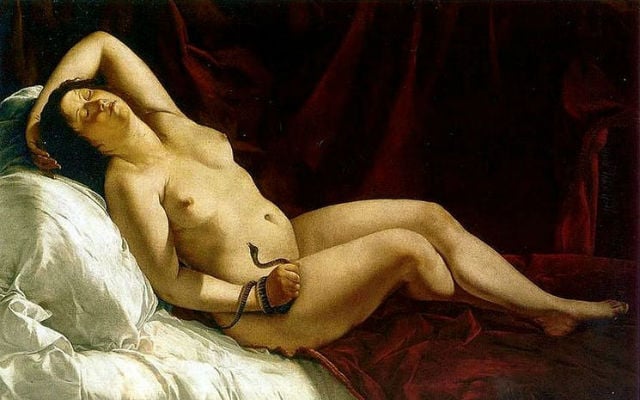 Artemisia Gentileschi, Death of Cleopatra, 1613 or 1621-1622.
Artemisia Gentileschi, Death of Cleopatra, 1613 or 1621-1622.
And so, when Orazio discovered what had happened to his daughter, it was agreed that Tassi would marry the young Artemisia. He agreed, and continued his sexual activity with the teenager, only to later to go back on his promise. It is only at this point, about nine months after the initial attack, that her father decided to have Tassi arrested.
Orazio was already a well-known artist at the time, and probably due to his connection with Caravaggio, there was huge public interest in the trial. What followed was a public, sordid and humiliating seven-month ordeal, during which the teenage Artemisia was called to give evidence.
Transcripts of the trial still exist, and they make for some seriously disturbing reading. The onus was very much on Artemisia to prove what Tassi had done; she was questioned in excruciating detail and her reputation brought into question, with some witnesses claiming she was a whore and that the home operated like a brothel. She was poked and prodded during questioning to prove whether or not she was telling the truth.
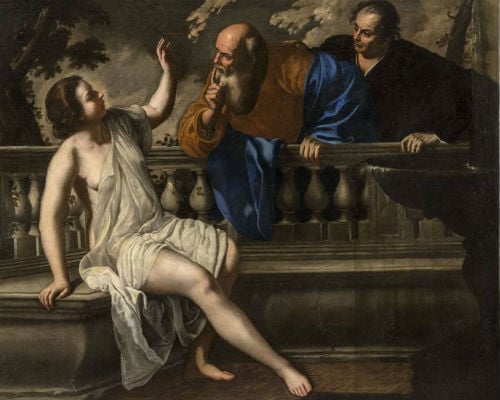
Artemisia Gentileschi, Susanna and the Elders, 1652.
In the end the court found in favour of Artemisia, but handed down a mild sentence to Tassi. The most important thing for Artemisia was that her reputation had been restored. However, the public attention that she had received during the trial made staying in Rome impossible for her, so her family had her hastily married to a Florentine painter and the young Artemisia went to Florence start a new life.
It was in Florence that Artemisia truly began to develop her own voice. She fostered friendships with some the most influential people of the time and was known to correspond with Galileo and the Grand Duke of Tuscany. Her brilliance was finally recognised when she became the first woman to be accepted into Florence's Academy of Fine Arts.
Her works became sought-after, with dukes, princes and even kings requesting commissions. Artemisia’s success allowed her to travel around Europe, and she spent time in Venice and London before eventually settling in Naples where she lived the rest of her days, dying some time around 1656.
READ ALSO: Why architects in Italy fought to use the profession's female form
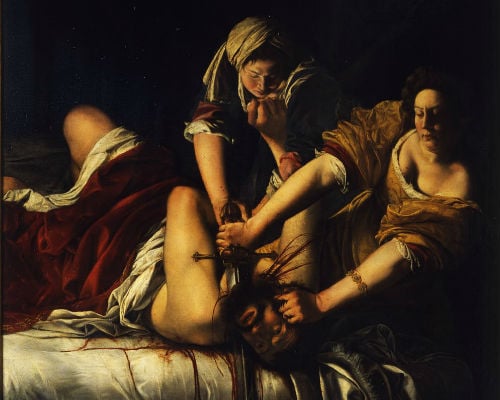
Artemisia Gentileschi, Judith Slaying Holofernes, 1614–20.
Her art fell out of favour in the 18th and 19th centuries but was rediscovered during the 20th century, and recent exhibitions in Rome and London have thrust Artemisia into the spotlight again. Like Caravaggio, the dramatic events of Artemisia’s early life sometimes overshadow her artistic achievements and undoubtedly her experience of rape informed her work to some degree – but it would be a mistake to see all of her art through the lens of a victim.
She was a talented artist before the rape and trial and she continued to be after. Away from the place that held such painful memories she blossomed, creating striking and original compositions that placed women firmly in the foreground; of the the roughly 60 paintings attributed to Artemisia, about 40 feature women prominently.
Artemisia overcame personal tragedy and excelled in a field that was traditionally a man’s world, and she did it on her own terms.
By Rachel Emerson, The Rogue Historians
The Rogue Historians' new Women’s History of Rome tour will be free of charge to all women on March 8th and March 9th at 10am (reservation required). The tour will also be running weekly from May for a fee, with a percentage of all profits going to support an international women’s refuge.
Comments
See Also
On March 8th, to celebrate International Women’s Day or “Festa della Donna”, the women of Rome will march through the city to highlight gender equality and women’s rights.
This rebellious spirit is nothing new. In 195 BC the women of Rome poured into the streets to have the Lex Oppia repealed. It was a law brought in during the Second Punic War that limited the “frivolous” spending of women, who were apparently bleeding their husbands’, and the city’s, coffers dry.
The women were successful; the law was scrapped, and a tradition of indomitable female spirit has endured ever since.
READ ALSO: Six inspiring Italian women who changed the world

'Untameable': at a march against violence against women in Rome, 2018. Photo: Tiziana Fabi/AFP
Italian society and legislation may not have promoted gender equality through the centuries, but that hasn’t stopped generations of Italian women rising above the parapet to leave a mark on history.
So to mark this International Women’s Day, here’s just a handful of exceptional women who have made Rome's history richer.
Livia Drusilla (58 BC-AD 29), the 'First Lady' of Rome
She may have lived nearly 2,000 years ago, but no list of Rome’s most famous women would be complete without a mention of Livia Drusilla, the wife of Rome’s first emperor, Augustus. Despite living at a time when women were governed by male guardians, Livia enjoyed an unprecedented position of prominence and power within Roman society.
Hailing from a prestigious, political aristocratic family, Livia herself was a shrewd and savvy operator who knew how to play Roman men at their own game. In public, Livia always played the role as the perfect model of female propriety; the perfectly modest, virtuous and loyal Roman wife, who even went so far as to spin and weave all of the imperial clothes from scratch.

Livia depicted as a goddess. Photo: Scailyna - CC BY-SA 4.0, Wikimedia
In private, however, Livia enjoyed the privileged status as counsellor to her husband. She advised him on a huge range of political matters, and maintained her own circle of clients and protégés, many of whom she helped to push into political positions.
Respectable Roman women were supposed to be quiet and basically anonymous, but Livia’s image spread throughout the empire, on coinage and in sculpture. We know of 88 sculptures of Livia – unheard of at a time when the only statues of women were goddesses.
Livia’s ambitions were fully realised when Augustus died and her son Tiberius succeeded him, cementing the dynasty of the first family of Rome. The writers of history were often unkind in their portrayal of her, casting her as treacherous, avaricious, power-hungry and even murdering. Romans gossiped that she poisoned her rivals and possibly even her own husband in order to secure her son’s position.
READ ALSO: The grim reality of the brothels of Pompeii
 Livia and her son Tiberius, in statues taken from Paestum. Photo: Miguel Hermoso Cuesta - CC BY-SA 4.0, Wikimedia
Livia and her son Tiberius, in statues taken from Paestum. Photo: Miguel Hermoso Cuesta - CC BY-SA 4.0, Wikimedia
But through the line of her two sons, Tiberius and Drusus, she is literally the matriarch of the entire Julio-Claudian dynasty. She is a woman who, despite living at a time when women were severely restricted, saw a route to relative independence and power. As the “First Lady of Rome” she broke the glass ceiling of Roman society at the time, which is precisely why she made the writers of history so nervous.
Olimpia Maidalchini (1591-1657), the 'female pope'
The extraordinary life of Donna Olimpia Maidalchini is something of a rags-to-riches story. She was a woman who in the 17th century decided that she wasn’t going to accept the path that life had set out for her and rose from obscurity to become the closest advisor of the pope, earning herself infamy and the nicknames “La Papessa”, the female pope, and more derogatorily, “La Pimpaccia”, woman of sin.
Born to a modest family, Olimpia was destined for life in a convent, but this formidable young girl had other plans. Whilst undergoing instruction for taking holy orders, she accused the local priest of sexually harassing her.
The priest resigned in shame and young Olimpia, at the age of 16, found herself a suitable match for marriage: an elderly landowner, one of the wealthiest men in her hometown of Viterbo. Just three years later her first husband died, leaving her a free and wealthy widow.

A portrait of the merry widow.
Her next husband was Pamphilio Pamphilj, a man from one of Rome’s most prominent families. Olimpia now had the aristocratic prestige to match her wealth. This marriage lasted considerably longer, and allowed Olimpia to embed herself in elite Roman society.
When her second husband died in 1639, she decided not to remarry – she was already 48 years old – but more importantly, her brother-in-law, Giambattista Pamphilj, was already a powerful cardinal, and on track to become even more.
READ ALSO: The Italian mathematician who helped pave the way for women in STEM
By 1644, her brother-in-law was elected to the papacy and became Pope Innocent X. The pair already had a long familial relationship and it seemed that Innocent X had come to rely on her for advice. So, shortly after his election, the pope bestowed Olimpia with certain honours, including being designated his heir in his will and named the “Princess of San Martino”, near her hometown.
According to accounts she convinced the pope that it was immoral for the Vatican to collect taxes from brothels, and instead, he sold her the right to collect the taxes. She even hung the Pamphilj family crest above the doors of her brothels so that local law enforcement would leave her establishments alone.

Olimpia Maidalchini's bust in the Galleria Doria Pamphilj in Rome. Photo: Sailko - CC BY 3.0, Wikimedia
Needless to say such a brazen display of power from a woman at this time was scandalous, and earned her the hatred of the Roman people. Olimpia was seen as the reins behind the papacy and many suggested that she was in fact the pope’s mistress.
When Innocent X died on January 7th 1655, Olimpia’s power in Rome evaporated and the city was no longer safe for her. Before she made her escape, it is said that she took two great chests full of silver and gold from under the pope’s bed and loaded them into her carriage. She then bid the city farewell. Olimpia fled to her estate at San Martino al Cimino, never to return to Rome again. She died two years later from the plague.
Olimpia was certainly a fierce, independent, and at times unlikable woman, but her legacy was to be enduring. One of Rome’s most famous ghost stories still tells the story of “la Pimpaccia”, the mistress of the Vatican.

The arch through which Olimpia's ghostly carriage is said to disappear. Photo: By Lalupa - CC BY-SA 3.0, Wikimedia
They say that on January 7th each year, the night of the death of the pope, Olimpia can be seen loading the crates of gold into a black carriage at her palace on Piazza Navona. She climbs aboard and the chariot tears away, pulled by four black steeds. The carriage races through the streets of Rome, leaving a trail of fire in its wake, Olimpia’s shrill laugh ringing through the air. She makes her way towards Ponte Sisto and over the bridge towards the Gianicolo Hill, where the carriage is said to disappear through the gates of Hell.
There are few men who have stories like that told about them more than 350 years after their death.
Artemisia Gentileschi (1593-c.1656), painter of bold and defiant women
Artemisia Gentileschi was one of the great artists of the Baroque, more than capable of holding her own next to some of the more famous giants of the period. Her canvases were bold and dynamic, revealing her female protagonists as so much more than passive objects of the male gaze, and they were in high demand during her own lifetime.
Artemisia’s art is captivating in its own right, but for that art to be produced by a 17th-century woman whose life was marked by tragedy and violence makes her an even more intriguing character.
READ ALSO: An Italian Baroque heroine for the #MeToo era

Artemisia Gentileschi, Self-Portrait as Saint Catherine of Alexandria, c. 1616.
Born in Rome in 1593, she was the daughter of painter Orazio Gentileschi. Her father was a talented artist and a contemporary and friend of Caravaggio. Artemisia showed promise from an early age, and despite her father’s initial reluctance to train his daughter, he eventually realised her potential and fostered her fast-developing skills.
Orazio decided to introduce Artemisia to one of his colleagues, Agostino Tassi, for further tuition (professional art academies were a male-only arena at the time). The decision was to prove a tragic one: Tassi brutally raped Artemisia. She was just 17 years old.
For women of the era rape brought great shame on the family and particularly the woman. As a result, women were often forced to marry their rapists (this custom of a "rehabilitating marriage" would continue in Italy until the mid-20th century, when Franca Viola pushed to have the law scrapped and her rapist fully prosecuted).
 Artemisia Gentileschi, Death of Cleopatra, 1613 or 1621-1622.
Artemisia Gentileschi, Death of Cleopatra, 1613 or 1621-1622.
And so, when Orazio discovered what had happened to his daughter, it was agreed that Tassi would marry the young Artemisia. He agreed, and continued his sexual activity with the teenager, only to later to go back on his promise. It is only at this point, about nine months after the initial attack, that her father decided to have Tassi arrested.
Orazio was already a well-known artist at the time, and probably due to his connection with Caravaggio, there was huge public interest in the trial. What followed was a public, sordid and humiliating seven-month ordeal, during which the teenage Artemisia was called to give evidence.
Transcripts of the trial still exist, and they make for some seriously disturbing reading. The onus was very much on Artemisia to prove what Tassi had done; she was questioned in excruciating detail and her reputation brought into question, with some witnesses claiming she was a whore and that the home operated like a brothel. She was poked and prodded during questioning to prove whether or not she was telling the truth.

Artemisia Gentileschi, Susanna and the Elders, 1652.
In the end the court found in favour of Artemisia, but handed down a mild sentence to Tassi. The most important thing for Artemisia was that her reputation had been restored. However, the public attention that she had received during the trial made staying in Rome impossible for her, so her family had her hastily married to a Florentine painter and the young Artemisia went to Florence start a new life.
It was in Florence that Artemisia truly began to develop her own voice. She fostered friendships with some the most influential people of the time and was known to correspond with Galileo and the Grand Duke of Tuscany. Her brilliance was finally recognised when she became the first woman to be accepted into Florence's Academy of Fine Arts.
Her works became sought-after, with dukes, princes and even kings requesting commissions. Artemisia’s success allowed her to travel around Europe, and she spent time in Venice and London before eventually settling in Naples where she lived the rest of her days, dying some time around 1656.
READ ALSO: Why architects in Italy fought to use the profession's female form

Artemisia Gentileschi, Judith Slaying Holofernes, 1614–20.
Her art fell out of favour in the 18th and 19th centuries but was rediscovered during the 20th century, and recent exhibitions in Rome and London have thrust Artemisia into the spotlight again. Like Caravaggio, the dramatic events of Artemisia’s early life sometimes overshadow her artistic achievements and undoubtedly her experience of rape informed her work to some degree – but it would be a mistake to see all of her art through the lens of a victim.
She was a talented artist before the rape and trial and she continued to be after. Away from the place that held such painful memories she blossomed, creating striking and original compositions that placed women firmly in the foreground; of the the roughly 60 paintings attributed to Artemisia, about 40 feature women prominently.
Artemisia overcame personal tragedy and excelled in a field that was traditionally a man’s world, and she did it on her own terms.
By Rachel Emerson, The Rogue Historians
The Rogue Historians' new Women’s History of Rome tour will be free of charge to all women on March 8th and March 9th at 10am (reservation required). The tour will also be running weekly from May for a fee, with a percentage of all profits going to support an international women’s refuge.
Join the conversation in our comments section below. Share your own views and experience and if you have a question or suggestion for our journalists then email us at [email protected].
Please keep comments civil, constructive and on topic – and make sure to read our terms of use before getting involved.
Please log in here to leave a comment.